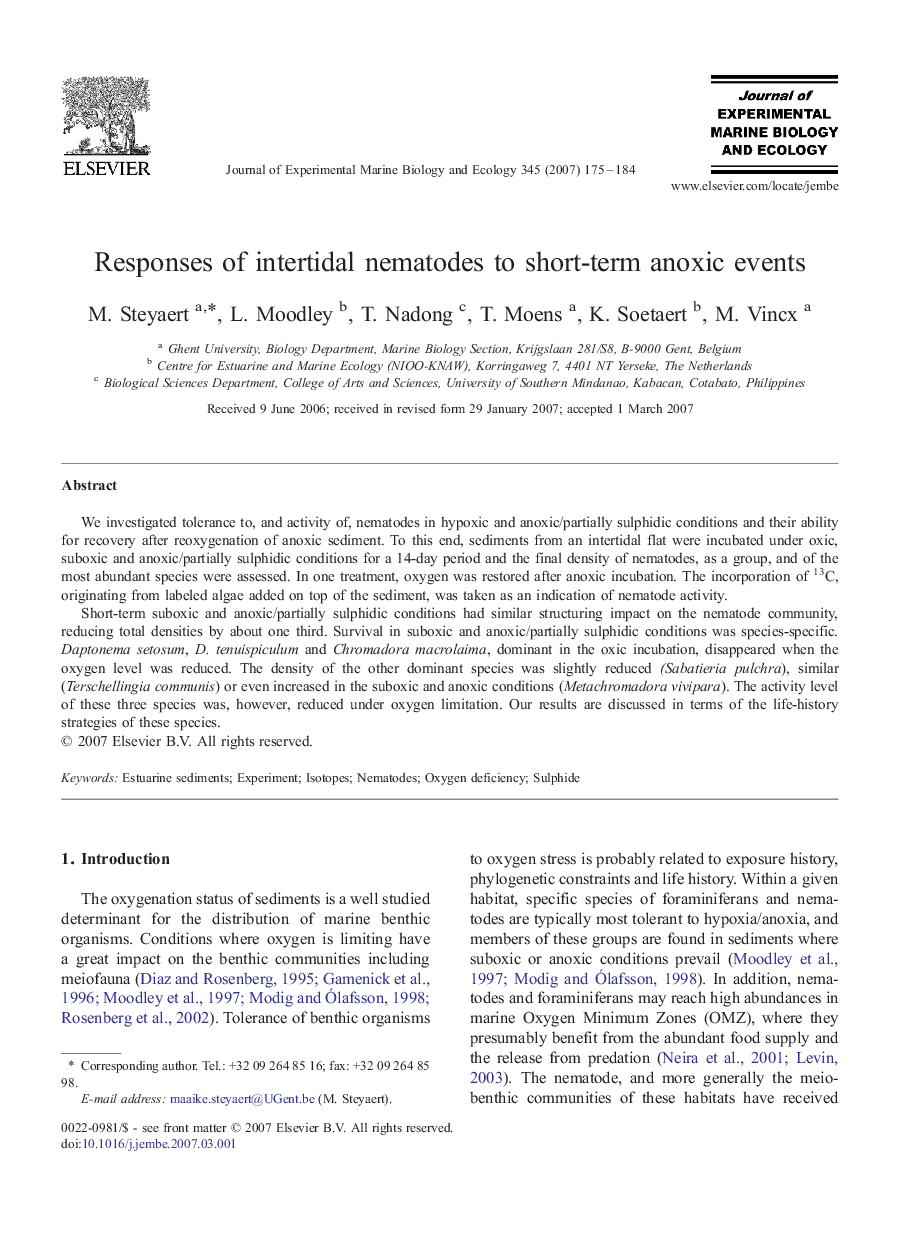| Article ID | Journal | Published Year | Pages | File Type |
|---|---|---|---|---|
| 4397828 | Journal of Experimental Marine Biology and Ecology | 2007 | 10 Pages |
We investigated tolerance to, and activity of, nematodes in hypoxic and anoxic/partially sulphidic conditions and their ability for recovery after reoxygenation of anoxic sediment. To this end, sediments from an intertidal flat were incubated under oxic, suboxic and anoxic/partially sulphidic conditions for a 14-day period and the final density of nematodes, as a group, and of the most abundant species were assessed. In one treatment, oxygen was restored after anoxic incubation. The incorporation of 13C, originating from labeled algae added on top of the sediment, was taken as an indication of nematode activity.Short-term suboxic and anoxic/partially sulphidic conditions had similar structuring impact on the nematode community, reducing total densities by about one third. Survival in suboxic and anoxic/partially sulphidic conditions was species-specific. Daptonema setosum, D. tenuispiculum and Chromadora macrolaima, dominant in the oxic incubation, disappeared when the oxygen level was reduced. The density of the other dominant species was slightly reduced (Sabatieria pulchra), similar (Terschellingia communis) or even increased in the suboxic and anoxic conditions (Metachromadora vivipara). The activity level of these three species was, however, reduced under oxygen limitation. Our results are discussed in terms of the life-history strategies of these species.
